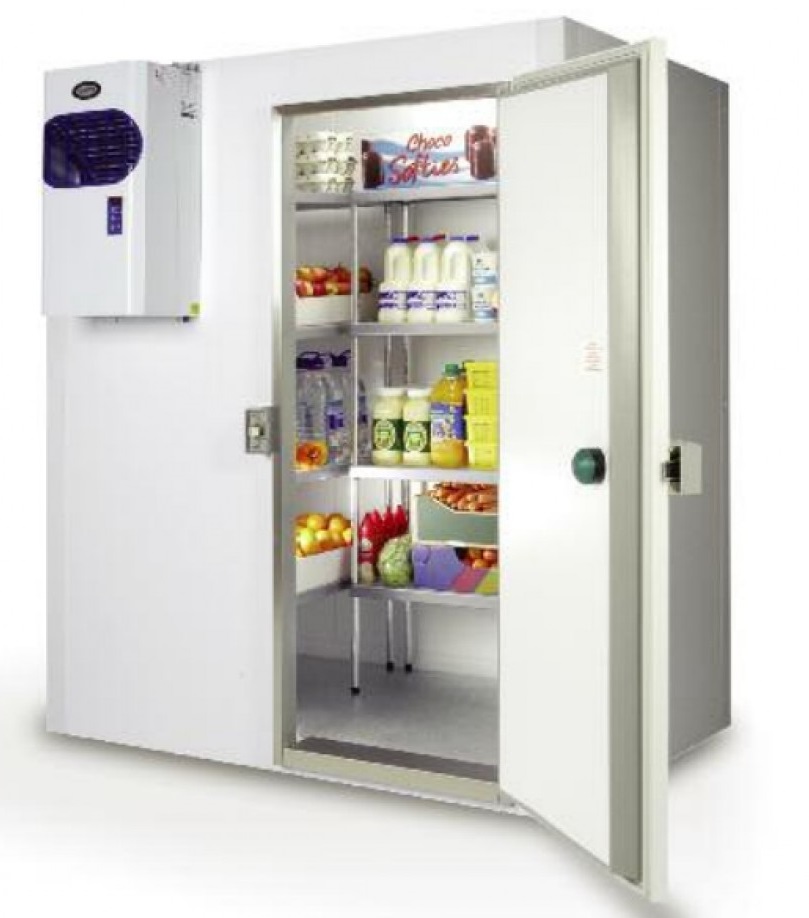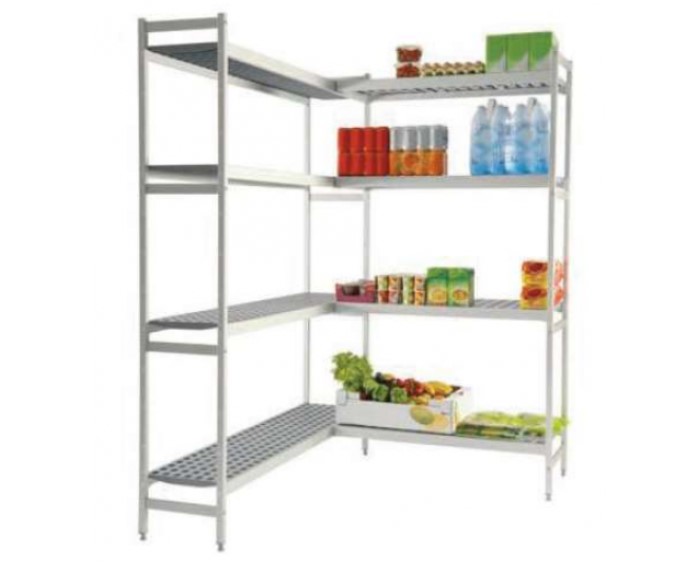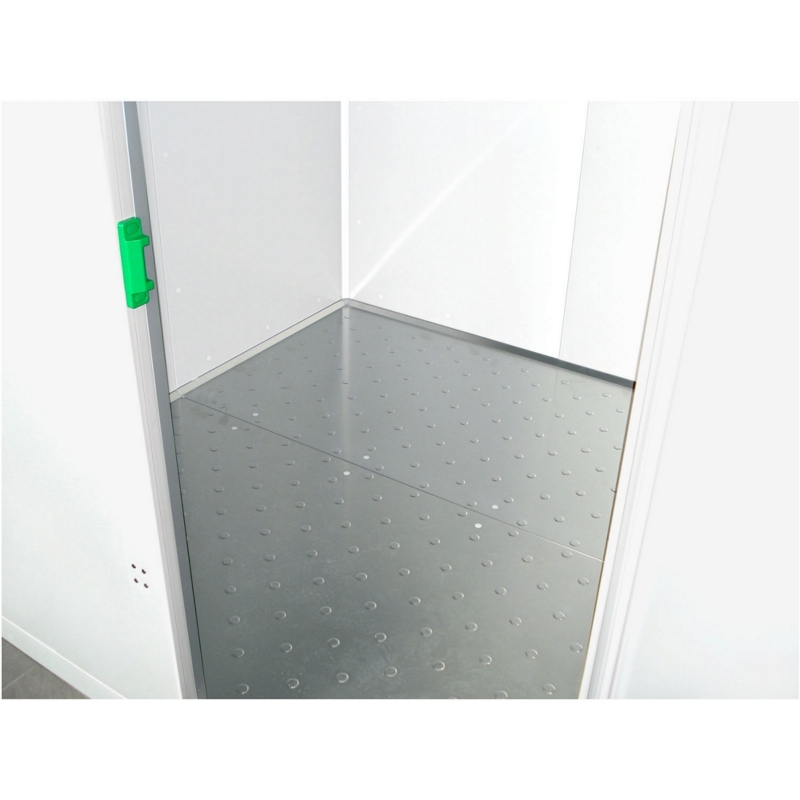
Setting up a business is a stressful time for even the most seasoned professionals. Making sure that the equipment is perfect is vitally important especially due to the large price tags associated with commercial grade refrigeration pieces. With so many areas and features to be factored into the decision, it is essential to understand all aspects and consider exactly what your individual needs are.
If you are unsure as to whether your business would benefit from a cold store take a look at our buying guide and pick up some useful tips not only on selection and operation but also on basic maintenance to ensure longevity and ultimate performance.
Table of Contents
Do you Need a Cold Room?
What Size Area are you Working With?
Is Installation Tricky?
How Do Cold Stores Work?
What Temperatures Can I Expect?
Benefits of Walk-In Chillers
Areas to Consider Before Investing
Coldroom Maintenance Tips
Ask Advice
Do you need a cold room?
The type of food you serve and the size of your business will be major factors in this decision. You will also need to consider the regularity of food orders. Large businesses that use high quantities of refrigerated ingredients will obviously require larger refrigeration equipment although this alone does not necessarily mean that you need a walk-in unit. Factor in the number of deliveries you receive every week. If you take charge of fresh produce on a daily basis and tend to use it all, there will be less need for specialised storage. If, on the other hand, your business only receives weekly food orders you will definitely need a refrigerated cold store with more substance that is able to hold larger quantities of ingredients.
What size area are you working with?
Although walk-in chillers used to be solely large installations for massive businesses they are now available for a variety of settings and are more accessible for smaller food premises that need additional storage. If you receive large food deliveries and have space available you will be able to find a cold store to fulfil your needs.
Sizes vary from the area of a small closet to a large room depending on the amount of storage required and the space available to work with. Each walk-in refrigerator should be fitted with food grade shelves creating efficient storage for boxes, blocks and any other large perishable goods, maximising space without compromising on organisation.
Getting the size perfect is important for efficiency. Choosing a smaller unit will leave goods packed too tightly, therefore, reducing air circulation and creating uneven temperatures. Choosing a unit that is too large will result in increased cooling costs. Achieving the perfect balance between volume/capacity within the space available is the primary factor.
Modular cold rooms and freezer rooms are available in a wide range of dimensions, although they are typically standard boxed or rectangular rooms. Read more here about Modular Cold Rooms. Some businesses will have unusual angles or layouts to work with and may, therefore, require more specialised service. Bespoke cold rooms are the perfect solution. Delivering a 'made to order' service, the size, shape and configuration of the walk-in chiller or freezer is entirely formed based on your individual needs and requirements. Click here to read more about Bespoke Cold Rooms.
Is installation tricky?
Walk-in chillers must be fitted by a trained engineer. Modular construction and simple yet secure camlock fixtures mean that installation isn’t as difficult as it once was. These additional refrigeration units can be erected inside an existing building, outside or even as a lean-to extension. All cold room manufacturers will visit the site to assess the area and the requirements of the business prior to installation to make sure that the process runs as smoothly as possible.

Site survey and installation may be included in the purchase cost however some manufacturers will charge an additional fee – be sure to check exactly what is included in the price.
How do cold stores work?
The technology is similar to that of domestic refrigeration, however, is more complex due to the size of and demands on commercial units.
What temperatures can I expect?
Refrigerated chillers typically operate with a temperature range of between 0˚C and 10˚C, ample for optimum chilled storage for dairy and cooked meats etc. For fresh fish and raw meat lower temperatures are required and so you should look for a range of -2˚C – 5˚C. Walk-in freezers are also available which have even lower temperatures of around -15˚C to -25˚C. Always consider the types of foods you will need to store in order to determine which option best suits your needs.
If you require two separate temperatures there should be an option to install a Combi system whereby a room is separated by a wall allowing each area to be set to a different climate. This Combi option doesn’t use as much space as two separate modular units, making it ideal for smaller businesses.
Benefits of walk-in chillers

Having ample shelving ensures that organisation and convenience are maximised. Finding food and drink located methodically on shelving is far easier than searching through multiple drawers or shelves in a smaller refrigerator. While walk-in coolers are ideal for storing large quantities of ingredients, smaller standard pieces of refrigeration equipment will still be vital for regularly used items.
Areas to consider before investing
- Will you receive a free site survey and installation included within the purchase cost?
- Is the unit remote or integral? Both integrated cold rooms and integrated freezer rooms feature all working components within the main body of the cold store. Remote cold rooms and remote freezer rooms, however, have an external motor connected to the unit with refrigerant pipes. Read more information on the benefits of remote and integral operations.
- Are there modular options available that fit your individual business requirements or do you need to look for a more tailored option with a bespoke solution?
- Does the unit have the necessary safety? Cold rooms should meet 2006 HACCP regulations to ensure the safety of the staff using the room.
- Are you maximising the space available? The perfect walk-in refrigeration should be able to greatly increase your storing capabilities in relation to the available area. Ample shelving will also guarantee that all stock is easy and quick to locate and simple to organise and rearrange when necessary.
- What about warranty cover? All quality cold store manufacturers will generally provide two options for customers to choose from - 'supply only' or 'supply and install' services. The 'supply only' option will generally be covered by a parts only warranty. Where an installation service by a manufacturer engineer is utilised, a full parts and labour warranty will typically be supplied.
- What are the standard levels of insulation? The majority of cold rooms will feature insulation measuring approximately 80mm thick. The deeper the insulation the more protection from higher external temperatures is available increasing overall efficiency. Thicker insulation will typically cost more however efficiency is increased and running costs will be reduced in the

- Does the unit need to be situated next to a drain? Is the area you have available suitable for the equipment?
- Do you need a floor? While floors will offer increased insulation and efficiency they will also prove more costly to install. Larger walk-in refrigeration stores and freezer rooms will require an insulated floor to achieve desired temperatures however the same feature in standard sized rooms is optional. Having an in-built floor will create a small step into the unit and so it is vital to establish whether you will need to use a trolley or cage to manoeuvre stock. If a floor is vital and so is the use of trolleys, you may want to consider one of two options;
- Install a small ramp for ease of access.
- Excavate the floor prior to installation resulting in a level base once the floor is in place.
Obviously the first is a cheaper yet still effective option while the second will take prior planning, work and expense to prepare the area for installation yet may give a cleaner and more aesthetically pleasing result.
- Is there an option to spread the cost? We offer a leasing option on all purchases of £1000 or above excluding VAT.
Coldroom Maintenance Tips
Cold rooms are pricey pieces of kit and so it is vital to carry out regular cleaning and maintenance to achieve maximum results and save money on potential breakdowns and repairs.
Aim to have any servicing and maintenance carried out before the start of the warmer weather. This ensures that your equipment is able to cope with the increased workload and counteract hotter ambient temperatures.
Cleaning must be carried out on a more regular basis ideally every morning. Air vents at floor level will often attract and collect dust, dirt and surrounding clutter e.g. leaves when situated externally or carpet fibres if situated internally. If the motor can’t breathe or becomes blocked, unnecessary pressure will be put on major components. The motor will become hot and will wear out more quickly.
Clear any debris from the vent and wipe away dust with a mildly damp cloth to maintain optimum conditions.
Ask advice
There are many walk-in chiller room manufacturers, obviously some better than others. If you are unsure as to the type of cooler and the size that you require, always ask the advice of a neutral third party. The team at FFD are trained to listen to individual business requirements and highlight the best options available.

Leave a Comment
Your email address will not be published. Required fields are marked *